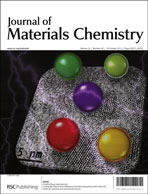Enhanced hydriding–dehydriding performance of 2LiBH4–MgH2 composite by the catalytic effects of transition metal chlorides†
Abstract
2LiBH4–MgH2 is an attractive system for hydrogen storage. However, its dehydriding and rehydriding kinetics have to be further improved for practical applications. To solve these problems, three transition metal chlorides (FeCl2, CoCl2 and NiCl2) were introduced into the 2LiBH4–MgH2 system and their catalytic roles in the dehydrogenation–rehydrogenation properties were investigated systematically. The results show that all three chlorides can significantly enhance the dehydriding and rehydriding kinetics of the 2LiBH4–MgH2 system with/without hydrogen back pressure, and NiCl2 is the best modifier among them. The NiCl2-doped sample exhibits no incubation period for generating MgB2 during


 Please wait while we load your content...
Please wait while we load your content...